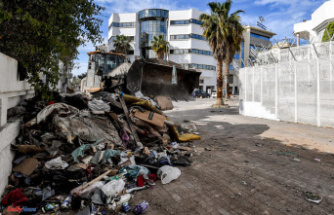“This is bad news. A huge number, bigger than ever,” laments Claudia Coppa, lead author of a Unicef report on female genital mutilation, published Thursday March 7, on the eve of International Women’s Day.
According to new global estimates in this report, the number of women and girls who have survived clitoral ablation, excision (total or partial removal of the clitoris and labia minora) or infibulation (excision plus suture of the opening vaginal to shrink it) is now estimated at over 230 million, or 30 million more people than in 2016, representing an increase of 15%.
These painful, sometimes fatal mutilations also have long-term psychological and physical consequences, such as fertility problems, complications during childbirth, stillborn babies and pain during sexual intercourse.
Sharp decline in practices in Sierra Leona
Africa is the most affected continent with more than 144 million survivors of these mutilations, ahead of Asia (80 million) and the Middle East (six million), according to the report which focuses on thirty-one countries where the practice is common.
But despite the increasing total number, linked largely to population growth in these countries, the report highlights progress in reducing this practice which violates the most fundamental human rights. Thus, some countries are recording a significant decline, such as Sierra Leone where the percentage of adolescent girls aged 15 to 19 having undergone genital mutilation has fallen in 30 years from 95% to 61%, but also Ethiopia, Burkina Faso , Kenya. But in Somalia for example, 99% of women between 15 and 49 years old have undergone genital mutilation, 95% in Guinea, 90% in Djibouti, 89% in Mali.
“We are also observing a worrying trend, with more and more girls undergoing this practice at younger and younger ages, often before their fifth birthday,” notes Unicef boss Catherine Russell in a press release. “This significantly reduces the possibility of intervention. We must redouble our efforts to end this harmful practice.”
Progress would need to be 27 times faster to successfully eradicate this practice by 2030, as planned by the UN Sustainable Development Goals. But even if perceptions are changing, these mutilations “have existed for centuries, so changing social norms and practices linked to these norms takes time,” comments Claudia Coppa at Agence France-Presse.
The silence of men
Where they persist, “it’s linked to entrenched forms of gender inequality,” she insists. “In some societies, it is considered a necessary rite of passage, in other contexts, it is a way to preserve the chastity of girls” and to “control” their sexuality, she continues, emphasizing the difficulty mothers to oppose it. However, they “remember the pain”, but “sometimes the pain is less than the shame” and the risk of seeing their daughters rejected by their community and unable to marry.
“They are not cruel mothers. They try to do what they think is expected of them,” insists the expert, drawing a more general parallel with society’s expectations of women.
“We are expected to be mothers, wives, to take care of our communities, to conform to expectations about purity and sexuality,” she adds. “Women know very well that if they don’t conform to these expectations, there are repercussions, there are punishments.”
Unicef then advocates for laws prohibiting this mutilation, but also for the education of girls and their emancipation. Without forgetting the role of men. Women generally think they want these mutilations to continue, but for those with a mutilated sister or mother, this is far from being the case in all countries, according to the report. “But they remain silent”, a silence which suggests their acceptance, regrets Claudia Coppa, calling “everyone to take a stand”.












